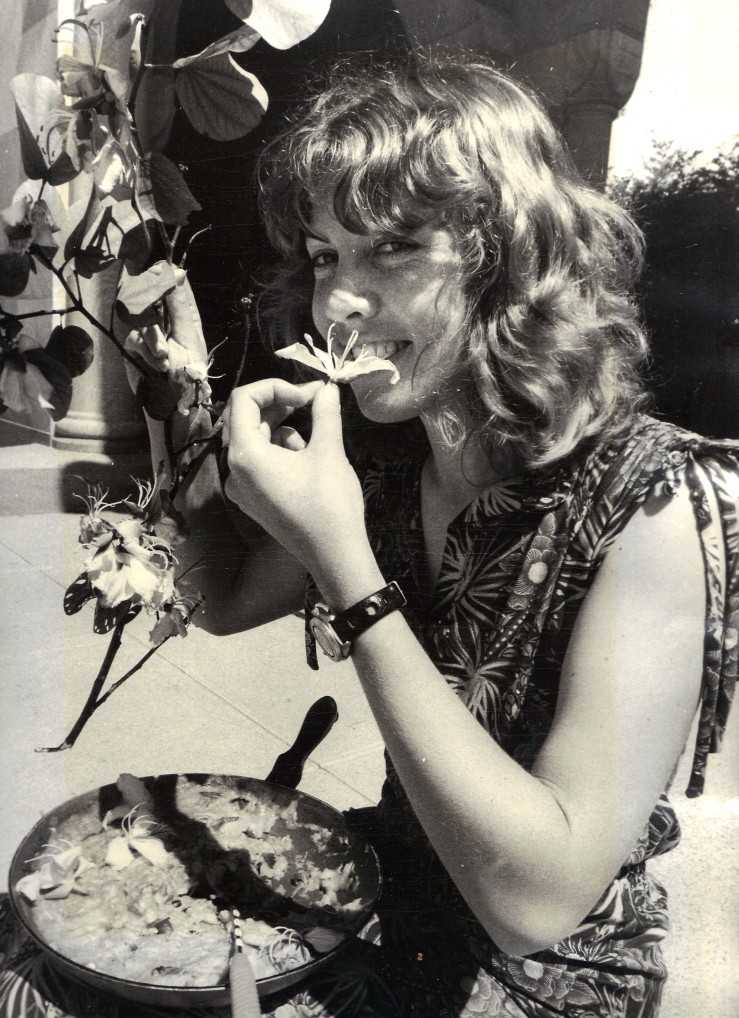Back in the early 1980s when I was president of the University of Queensland Botany Club we decided to experiment with recipes and ideas from my supervisor Alan Cribbs and his wife Joan’s “wild foods published volume. We held a party & said bring a plate based on wild food or weeds. The event proved to be popular and everyone wanted to swap recipes – and that’s how the recipe collection began.
The actual dishes were not the sort of thing you could survive on in the bush, because, for example, they required blenders & white sugar. They were more about substituting native wild ingredients and flavours in the dish. An example is bush lemon meringue pie. However, it allowed everyone to get adventurous in trying and tasting new things. This was in the days before bush tucker was a thing – we called it wild food.
Some real discoveries were made: For example, Avicennia mangrove fruit are terribly bitter until kept in the freezer for some time, then they become quite useful not unlike avocado for a dip. This was discovered by trial and error – when the taste is horrible, put the mangrove fruit back in the freezer for longer.
Postgraduates with their own study species went to a bit of trouble to find out if there could be anything edible created using that species. That is how my sargassum soup came to be, for example.
Word got round, popularity rose, a second recipe book evolved and before long we had enquiries and orders for the books from all around Australasia, and we were featured n the media including the Brisbane Courier Mail. It was well known that a press conference with food attached will always attract a good media presence.
For information regarding the edible wild plants and their distribution, we refer you to the book:
Wild Food in Australia
by
A.B. and J.W. Cribb
(published in 1975, Collins: Sydney and London, 240pp)
WILD FOOD COOKBOOKS – DISCLAIMER
It is very important that only those species listed as safe be used and that due attention is paid to guidelines given in this booklet for the preparation of food, such as use only the ripe fruit.
The Queensland Herbarium provides a free plant identification service.
https://www.qld.gov.au/environment/plants-animals/plants/herbarium
www.qld.gov.au/herbarium
The Botany Club accepts no responsibility for the consequences of misidentification of ingredients by the reader, neither can responsibility be accepted for the use by the reader of varieties within species mentioned in this booklet that are unknown to the Botany Club.
Here is a link to the poisonous plants page
https://www.childrens.health.qld.gov.au/chq/our-services/queensland-poisons-information-centre/plants-mushrooms
and
Poisons helpline 13 11 26
All plants that are native to Queensland are protected under the Nature Conservation Act 1992 and all marine plants are protected under Queensland law through provisions of the Fisheries Act 1994.
Collectors are advised to look into the legality of sampling or harvesting wild food plants and no responsibility is accepted by the authors or publishers of these recipes for infringement by readers.
Here are the two wild food recipe books!
Published by alisphere
Hello and welcome to my blog.
View all posts by alisphere






That was much fun! Something that I always remember. I still have the large saucepan in which I made the mushroom soup. Can’t recall who collected the mushrooms but they were lovely and black and the soup was great.
I also made wattle pollen pikelets. Nice too. Many years later we tried to collect wattle pollen for some asthma research and it was surprisingly hard! But had done it before for open day for the Botany Club so we persevered. I learnt lots of things.
Including how nice glacé prickly pear fruits are! The piece de resistance! We see them in the markets here in France (just appearing now in fact) and they remind me of those happy times.
So thankyou my dear. The recipe book has many memories.
❤️😍😘